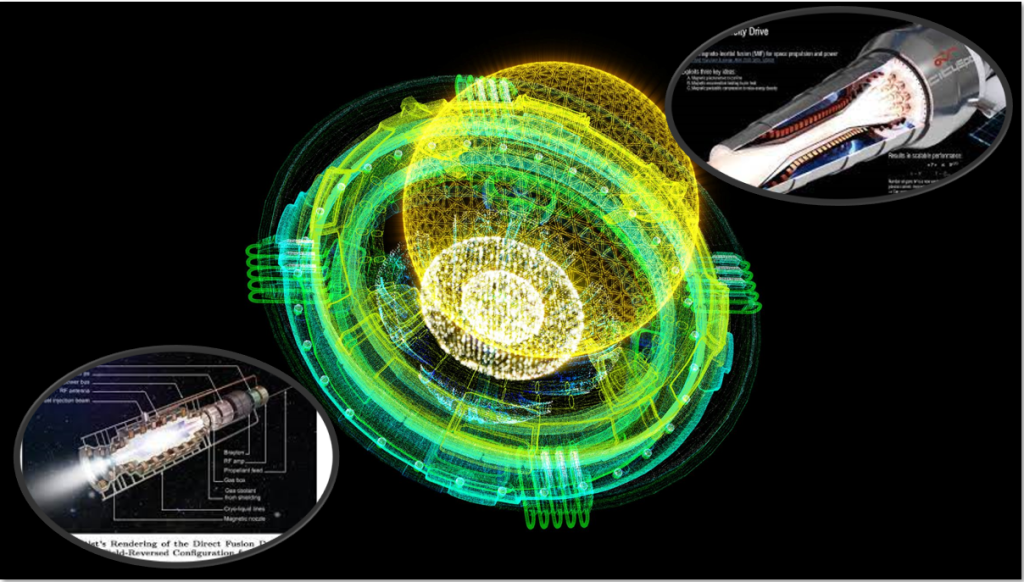The possibility of space travel at record time is a topic of interest for experts, who are studying the potential of a new propulsion technology called the “direct fusion drive” (DFD). This type of engine, also known as “anuetronic fusion”, exploits the advantages of nuclear fusion and combines them with the power of chemical rockets, creating a high power-to-weight ratio that could cover the distance between Earth and Saturn in about two years.

Researchers from the Princeton Plasma Physics Laboratory (PPPL) are investigating the potential of the PFRC-2 drive, which could be the key to making space travel within our solar system possible. Saturn’s largest moon, Titan, is a prime candidate for space exploration, given its surface liquids, which are hydrocarbons that have piqued the interest of scientists. Titan’s resources could even become a fueling station for a space highway system in the future.
The DFD fuel system contains deuterium and a helium-3 isotope and can provide a range of 1 to 10 MW, making it ideal for both robotic and human solar-system missions, as well as interstellar missions. The propulsion system heats plasma to a working temperature, then uses the plasma’s energy to create thrust, and the reactor is small enough to fit in current spacecraft designs.
PPPL researchers are studying the direct fusion drive in two modes, with one where the engine is continuously pushing forward and another mode that works like a Prius and only pushes forward when it needs to. The trip to Titan using this propulsion system could take anywhere from 2 to 2.5 years.
While the direct fusion drive design is not expected to be operational until at least 2050, scientists have a clear goal to work toward. One major benefit of this design is that the DFD can power the interior systems of the spacecraft, including propulsion, steering, and research systems.
The direct fusion drive’s potential for space travel is significant, and it could be a game-changer for future missions within our solar system and beyond. Its unique plasma heating system and high power-to-weight ratio make it an efficient and promising option for space exploration, although there is still much research and development required before it becomes a reality.
In the meantime, it is exciting to imagine the possibilities that direct fusion drive could bring to space exploration, and the potential discoveries that could be made when we finally make it to Saturn’s moons, such as Titan.






